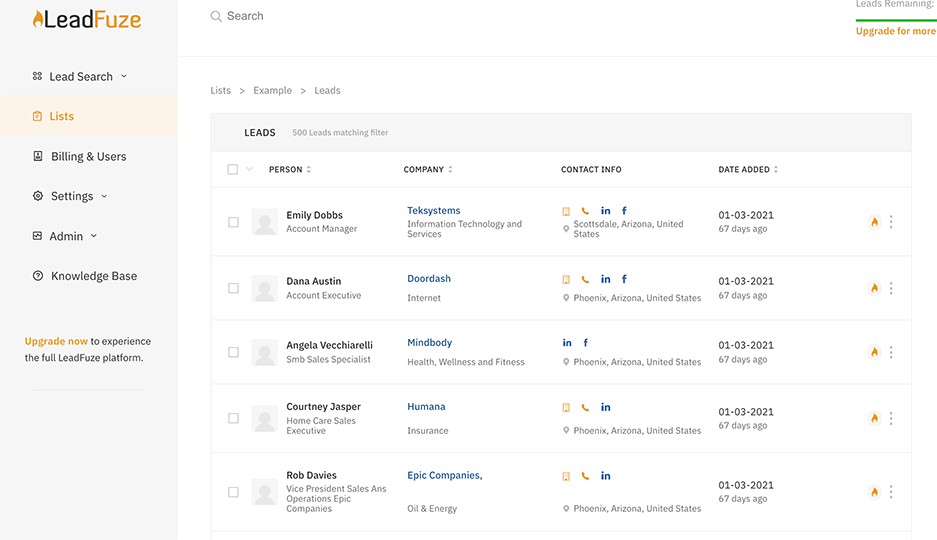As a sales representative, I am always looking for new leads and ways to increase my sales. When I was first introduced to data sales, I was skeptical. However, after doing some research and seeing the benefits firsthand, I knew that this could be a great way to improve my numbers. So, what is data sales? This post will tell you what it is and how you can apply the strategy to increase your sales.
What Is Data Sales?
What is data sales? Data sales is the process of using information that is collected from various sources to help improve sales. This data can come from many different places, such as customer surveys, financial reports, and even social media.
By understanding and analyzing this data, businesses can make better decisions about how to improve their sales. Additionally, advanced software and cloud-based CRM solutions can help businesses generate a large volume of sales data.
Any information your salespeople can use to make strategic decisions is sales data. This can include information on their overall performance, their strategy, and their organization.
But collecting this data isn’t enough. You have to use it to improve your sales processes and plan how these changes will affect your workflow.
Traditionally, sales reps have depended on their gut instinct and subjective research. They spend hours researching and chasing after the best-fitting prospect.
This process involves a lot of trial-and-error, and reps use their instincts and understanding of a prospect’s expectations to determine their pain points.
Sales data is changing the game for sales reps. Now, reps are able to make important decisions thanks to their access to the right information.
A data-driven approach to sales makes the entire process of closing deals more objective and more efficient.
In this article, we’ll discuss the importance of analyzing your sales data and how you can use it to make better business decisions.
What role does data play in sales?
Data is much more than a simple tool to improve your sales process. It’s an integral part of your entire business strategy.
Sales data, or business intelligence, is hugely important to businesses. It’s used to help drive your sales process, with 50% of companies using data to increase sales.
The graph above shows that businesses are now relying more on data analytics after the COVID-19 outbreak. (Source).
1. Increase lead generation
This is where the importance of data really shows. It is where the transition from “market to whoever” to “targeted market” starts.
Many companies use historical information to develop insights about each region’s potential customer base.
By cross-referencing with other internal and external data sources, you can better target your lead gen efforts and more accurately determine when to contact your prospects.
Using an AI component, such as chatbots, can help you identify promising prospects for your sales team.
2. Maximize the lifetime value of your customers
Understanding the value of your customers is essential for building effective strategies to acquire new ones and retain the ones you already have.
By identifying unhappy customers early on, you can prevent complaints and cancellations. This helps keep existing customers happy and reduces the chances they’ll leave.
3. Pricing your products correctly
Setting your price too low can be detrimental to your business. You need to make sure you aren’t pricing yourself out of business.
That could result in you giving a bad impression about your product or service.
Pricing is tricky, but data can help. The right pricing strategy can set you apart from competitors, but choosing too low a price can suggest low quality.
Sales is all about data. Not just about how to close the deal, but everything ranging from pricing to negotiating to closing the deal with the customer.
By analyzing data on how your customers interact with you, you can determine at what price they are most willing to buy.
By understanding your customer’s willingness to pay, you can optimize your prices for profit while still providing value.
4. Assign the right employees to the right tasks
With more and more information available, finding qualified talent has become more data-driven.
By analyzing data across your sales, customer service, and HR departments, you can gain a better understanding of what personality traits and skills are necessary for success.
It’s ideal for identifying and allocating talent to proper accounts and projects.
Automation can help you save time by automating some of the tasks you would otherwise have to do manually.
By removing manual processes, you reduce the number of people you need, you eliminate mistakes, and you can focus on hiring the best sales talent.
How to Automate Data Entry to Increase Productivity
Automating data entry and updating existing records.
1. Make sure your objectives, key metrics, and data are in line.
The first step in a data-driven sales process is to align your team’s objectives with the primary goals of the company. Once everyone is on the same page, you can establish smaller, more attainable goals for individual team members.
Next, you have to figure out what kinds of data you have access to. This could include data from your CRM, business communications software, or other apps.
Of course, you can gather feedback from your customers, and your sales numbers.
What are some KPIs you can use to track the effectiveness of your data-driven selling?
The ultimate goal of a sales funnel is to make money, but there are also smaller, more immediate goals for each step of the way.
Creating brand awareness is the most important aspect of the top-funnel. This can be accomplished through increasing the number of visitors to your site, the amount of unique visits, and by acquiring new customers. While it’s important to focus on getting your name out there, it’s not as critical at this stage to concern yourself with conversion rates.
The mid-stage of the sales funnel is all about engagement. Track important KPIs like account engagements and pages visited. By paying attention to these, you’ll turn more visitors into qualified leads that are closer to becoming customers.
At this point, you have converted your leads into potential sale conversions.
Of course, the bottom funnel is where you convert leads into customers.
2. Customize your sales intelligence to meet the needs of your team
When sharing data, it’s important to only share what’s necessary. It shouldn’t be about hiding things, but about only giving others what they need.
Your team doesn’t need to know the specifics of how you gather data. What they do need to know is what you learn from it.
The things that they can use in their day-to-day dealings with customers and clients.
Dashboards are a great way to visualize data.
Instead of using a spreadsheet, you can present your analysis and insight through dashboards that are interactive and visually appealing.
If your business is business-to-business, then you’ll want to separate your leads into different lists for different types of business.
When creating data analysis dashboards, it is important to consider who will be viewing the dashboard. Different users will have different needs and interests. For example, a dashboard for C-executives who are focused on the bottom line will differ from a dashboard for sales managers who are interested in increasing sales conversion.
By customizing dashboards to meet the specific needs of different users, you can ensure that your dashboards are effective and informative.
From there, the stakeholder can brainstorm ways they can apply their suggestions to their role.
3. Eliminate the barriers between departments
Historically, each department at a company does its own marketing, sales and customer support. This often results in each doing their own separate things, such as collecting data, analyzing it, and executing their own marketing campaigns.
It’s inefficient because the company isn’t sharing information.
If you want to optimize the sales data-driven approach, you’ll need to break down the silos that exist between departments. Only then will your team be working towards the same goal.
Traditionally, marketing and sales have measured their success in different ways.
Sales may be content in producing a low number of conversions, but they may leave marketing unhappy when there’s a high number of leads. For them, quality conversions trump quantity.
Sales, marketing, and customer support can all benefit from having unified data when it comes to digital marketing. Having access to this data allows each department to see how customers interact with the company at every touchpoint. This information can be used to improve the customer experience and make sure that each department is working together to provide the best possible service.
4. Give your sales team the tools and training they need to succeed
Using data to inform your strategy isn’t as easy as it sounds. Your team can’t just be expected to become experts with new data-based techniques right away.
That is why it’s important to train your sales team on the new sales strategies, so they can learn to overcome their old habits and adopt new ones.
If you want your team to be successful, it’s important to provide them with the right tools.
Conclusion
So, what is data sales? Data sales is the process of using information that is collected from various sources to help improve sales. Overall, data sales can be extremely beneficial for businesses of all sizes. By understanding your customer base and using that information to generate sales, you can improve your bottom line while also providing better service. If you’re not already incorporating data sales into your strategy, now is the time to start!
Need Help Automating Your Sales Prospecting Process?
LeadFuze gives you all the data you need to find ideal leads, including full contact information.
Go through a variety of filters to zero in on the leads you want to reach. This is crazy specific, but you could find all the people that match the following:
- A company in the Financial Services or Banking industry
- Who have more than 10 employees
- That spend money on Adwords
- Who use Hubspot
- Who currently have job openings for marketing help
- With the role of HR Manager
- That has only been in this role for less than 1 year
Want to help contribute to future articles? Have data-backed and tactical advice to share? I’d love to hear from you!
We have over 60,000 monthly readers that would love to see it! Contact us and let's discuss your ideas!


